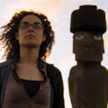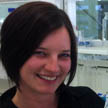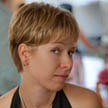I’m a Scientist is like school science lessons meet the X Factor! School students choose which scientist gets a prize of $1000 to communicate their work.
Scientists and students talk on this website. They both break down barriers, have fun and learn. But only the students get to vote.
This zone is the Organs Zone. It has scientists studying health and disease in various parts of our bodies. Who gets the prize? YOU decide!









A scientist called Broca in the 1800’s observed a patient who couldn’t speak, except for the word “tan”. He noticed that his patient could understand what was said to him, he just wasn’t able to speak back. When Broca’s patient died, Broca looked inside his brain and found a very small hole in an area of the front of the brain. He thought, “I wonder if this is the area for producing words?”. He noticed the same thing in another 7 patients and then told other scientists ” I have found the language area!”. He called it after himself, Broca’s area.
Now we have more sophisticated equipment and we don’t have to wait for people to die to look inside their brains. We can take images of their brains while they are awake using magnetic resonance scanners. Its a bit like an x-ray but instead uses very powerful magnets. When people lie inside the scanner, scientists can ask them questions and show them pictures and look at changes in brain activity. The more activity the more the person is using that area of the brain. With this equipment, scientists have found an area in the back of the brain that is activated when people look at pictures of faces. A face recognition brain area. How cool is that?
1
Yep, we can scan the brain as the individual does certain things. When the parts of the brain responsible for allowing these actions are called into action, the (Magnetic resonance imaging – MRI) scan shows activity. That’s how we can tell what parts do what
0
Great answers, guys!
0
Nice answers folks and yes there are many areas of the brain which have been found to have a specific function that have been named after scientists- Broca’s area, Wernicke’s area (understanding language).
There has also been reference to a region of the brain known as the inferior frontal gyrus (gyrus= bulge) and lateral sulcus (sulcus = groove/fissure) as the “Einstein” or “genius” area because post-mortem studies of Albert Einstein’s brain found this region to be less pronounced (smaller groove) suggesting there were more neural connections between this area of the brain (msking it bulge more!).
https://en.wikipedia.org/wiki/Albert_Einstein%27s_brain
0